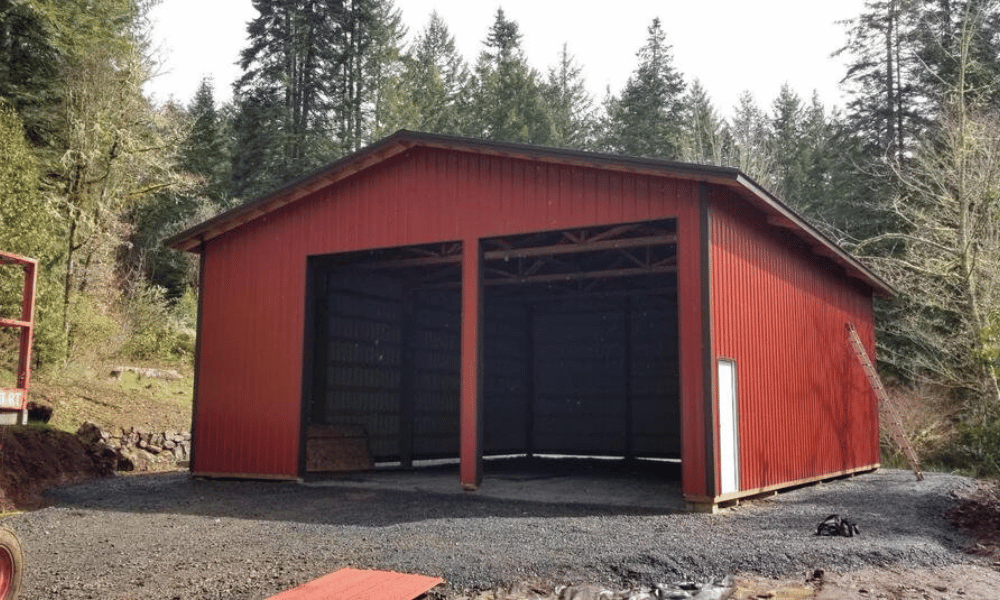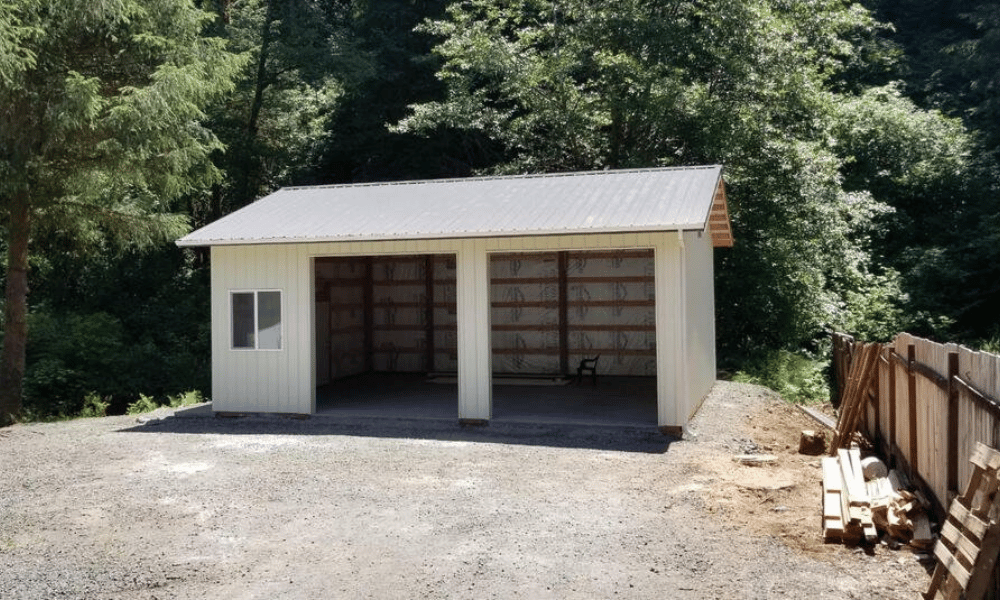Introduction: The Future of Farming Infrastructure
The landscape of farming is changing rapidly. With the increasing demand for agricultural products and the need for sustainable practices, farmers are constantly looking for innovative solutions to meet these challenges. One such solution that has gained traction in recent years is the use of modular pole buildings. These structures not only provide a versatile option for farm expansion but also ensure efficiency and durability.
In this article, we will explore how modular pole buildings simplify farm expansion, providing you with insights into their benefits, applications, and construction processes. Whether you're a seasoned farmer or new to the agricultural scene, understanding the advantages of pole buildings can significantly impact your farming operations.
What Are Modular Pole Buildings?
Defining Modular Pole Buildings
Modular pole buildings are pre-engineered structures designed using vertical posts as their primary support system. Unlike traditional construction methods that require extensive foundations and framing, these buildings utilize a simpler framework, allowing for quicker assembly and customization.
How Do They Differ from Traditional Barns?
Traditional barns often involve complex designs with heavy materials, requiring elaborate construction timelines. In contrast, modular pole buildings offer flexibility in design and can be erected in a fraction of the time while still providing robust support against harsh weather conditions.
Farm Expansion Made Simple with Modular Pole Buildings
Expanding a farm can be a daunting task filled with logistical challenges and financial considerations. However, choosing pole buildings for expansion simplifies this process immensely. Here’s how:
Quick Construction Time: Pole buildings can be assembled swiftly due to their prefabricated nature. Cost-Effectiveness: The reduced time on-site translates into lower labor costs. Customizable Design: Farmers can tailor these structures to fit specific needs—whether it’s storage for equipment or housing livestock.By opting for modular pole buildings during farm expansion, you streamline your growth process significantly.
Benefits of Choosing Modular Pole Buildings
Durability and Longevity
One of the primary advantages of modular pole buildings is their durability. Constructed with high-quality materials resistant to decay and pests, these structures can withstand extreme weather conditions like heavy snow loads or high winds.
Versatility in Usage
From storage facilities to livestock shelters, modular pole buildings serve various functions on farms:
- Equipment Storage: Protecting expensive machinery from environmental damage. Livestock Shelters: Providing safe environments for animals. Workshops: Creating spaces for maintenance or manufacturing.
Easy Maintenance Requirements
Maintaining a modular pole building is generally straightforward. The materials used are often resistant to rot and decay, meaning less frequent repairs compared to traditional wooden structures.

Design Flexibility in Modular Pole Buildings
Customizable Floor Plans
Farmers have unique needs based on their operational scale and type of farming. Modular pole buildings allow customization in floor plans that cater specifically to those requirements:
- Open layouts for machinery storage Partitioned areas for livestock management
Aesthetic Options Available
While functionality is crucial, aesthetics also play a role in farm expansion projects. With various siding options available—from metal to wood—farmers can choose designs that complement their existing structures or create a cohesive look across their property.
Construction Process Simplified
Pre-Planning Your Farm Expansion
Before diving into construction, it's vital to have a clear plan:
Identify your needs (storage vs. shelter). Set a budget considering all potential costs. Choose a location that maximizes utility.Erection Timeline Overview
The typical timeline from planning to completion of a modular pole building is significantly shorter than conventional methods:
Site Preparation (1 week) Foundation Work (1 week) Construction (2-4 weeks)This rapid timeline allows farmers to expand quickly without disrupting ongoing operations.
Investment Considerations for Farmers
Understanding Costs Associated with Pole Buildings
When budgeting for farm expansion using modular pole buildings, consider both initial investment costs and long-term savings due to durability and reduced maintenance requirements.

| Item | Estimated Cost | |--------------------------|--------------------| | Materials | $15-$30 per sq ft | | Labor | $10-$20 per sq ft | | Permits & Fees | Varies by location |
Financing Options Available
Farmers can explore various financing options including:
- Bank loans Agricultural grants Leasing options
Each option comes with its pros and cons depending on cash flow needs and long-term financial planning.
Environmental Impact of Modular Pole Buildings
Sustainable Building Practices
Many manufacturers focus on sustainability when producing materials for modular pole buildings—using renewable resources that reduce overall carbon footprints in farming operations.
Energy Efficiency Features
Incorporating energy-efficient elements such as insulation, natural lighting through skylights or windows not only helps save money but also promotes eco-friendly practices in agriculture.
Real-Life Success Stories: Farms That Expanded Successfully Using Modular Pole Buildings
Case Study 1: Smith Family Farm
Located in Iowa, the Smith family utilized modular pole buildings when expanding their dairy operations:
- Increased milk production capacity by 30%. Reduced feed costs through better storage solutions.
Case Study 2: Green Valley Orchard
This California-based orchard opted for custom-designed storage facilities which resulted in:
- Improved fruit preservation techniques. Enhanced operational efficiency during harvest season by 25%.
Challenges Faced When Implementing Modular Solutions
Despite numerous benefits associated with pole building expansions, there are challenges farmers might face:
Zoning Regulations: Some areas have strict regulations regarding structure sizes or materials used. Weather Considerations: Heavy storms may impact construction timelines even if the structure itself is durable. Initial Investment: While cost-effective over time, upfront expenses may deter some farmers from immediate action.FAQs
What are the main uses of modular pole buildings on farms?
Modular pole buildings serve various purposes including equipment storage, livestock housing, workshops, and even processing facilities depending on farming needs.
How long does it take to construct a modular pole building?
Typically between three weeks to two months from planning through completion depending on size and complexity; however this timeframe can vary based on local conditions such as weather or permitting processes.
Can I customize my pole building design?
Absolutely! One significant advantage is that you can tailor designs ranging from floor plans down to aesthetics like color schemes or finishes according to specific functional needs or personal preferences.
Are there any guarantees associated with purchasing modular structures?
Most reputable manufacturers offer warranties covering structural integrity along with material defects; it’s https://www.deanlindseyconstruction.com/pole-barn-garages-and-workshops essential always read terms carefully before making commitments!
What foundation is required for these types of constructions?
Pole structures typically don't require extensive foundations; they often rest directly onto concrete footings designed specifically based upon weight distribution characteristics determined during planning phases ensuring stability across diverse soil types encountered at site locations!
Is there any maintenance required after installation?
Maintenance tends towards minimal due primarily because modern materials resist decay & pests effectively reducing frequency necessary checks needed so long regular inspections occur ensuring longevity beyond expected lifespans!
Conclusion
The journey toward expanding your farm doesn’t have to be filled with hurdles; choosing modular pole buildings simplifies that process dramatically! With quick construction times combined alongside customized options tailored precisely meeting individual operational demands make them an attractive choice not just financially but functionally too! As we’ve explored here today—from real-life success stories through detailed breakdowns highlighting benefits—it’s evident why more farmers than ever before are turning towards this innovative solution when considering future growth strategies!
Whether you’re looking at storage solutions or creating new spaces dedicated towards animal care—modular options offer versatility unmatched elsewhere within agricultural infrastructure markets helping set paths leading towards success!
If you’re contemplating an expansion project anytime soon remember this insightful guide showcasing everything necessary achieving smooth transitions utilizing modern methods proving effective results time after time!